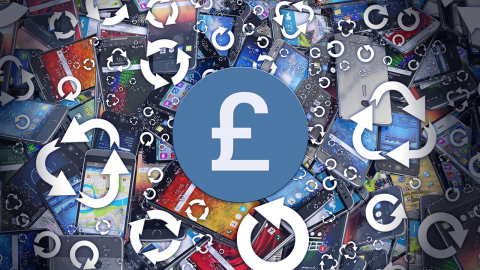

There is growth everywhere you look in the Android app market. Android app revenues are set to top iOS revenues this year and, according to App Annie, global app revenue is predicted to reach $102 billion by 2020.
More than half of global app developers are also focussing mainly on Android apps. This growth, however, is a double-edged sword because while it means more opportunities for app owners, it also means more people will be trying to muscle in on the market. The only way for app owners to maintain their position is to keep moving forward, increasing apps’ user base and improving monetisation.
The worst nightmare of any app developer is watching the app you’ve invested so much time and energy into languishing as an unloved and unpopular app in the forgotten corners of users’ phones or in the app store. So how can app developers ensure that they continue to attract users in today’s highly competitive market? How do you make sure that beyond getting your app downloaded your app is able to retain and continue to engage users?
Make sure your app is optimised for success
There are many well-made apps in the Google Play Store but the difference in the apps that succeed and those that don’t is often discoverability. Google recommends that your title must be unique and accessible, avoiding common terms and reinforcing what your app is about. The app description must also focus on what users will get from your app and it is important to review this description to make sure the most vital text is visible above the fold.
This might sound like basic stuff but more apps are discovered through search than any other method (58 per cent of Android apps are discovered by general browsing in the Google Play Store) so failure to get this part right could be costing you a significant amount of new users.
Paid user acquisition is a great option
One way to stay ahead of competition in the Android app market is to divert some app revenues towards new user acquisition. Buying app installs is a great way to grow your app and it enables app owners to supercharge growth in the Android app market. It can activate the daily active user base that can transform the fortunes of your app. By investing in effective paid user acquisition programs, app owners can also put themselves in a better position to make money from their apps.
With advertising playing such a pivotal role in the way app owners make money, the value of daily active users cannot be underestimated. Put simply, more users mean higher CPMs which translates to more revenue.
Once you get them, do what you can to keep them
It goes without saying that it is easier to convert interested users than to win over entirely new ones. Simplifying the onboarding process and making it easy for users to get on with the user experience you have created can be a game changer for your user acquisition. Reports suggest that effective onboarding can increase user lifetime value by 500 per cent. The more value users get from an app, the more likely that they will continue to use it and recommend to the people around them.
Don’t forget about re-engagement
Re-engagement – or getting users back to your app when they’re not active – has to be done sensitively. Push notifications is the go-to tool for many but, it doesn’t always work for everyone. For example, personalized push notifications from apps that have a useful reason to notify can be liked by consumers (e.g. sports results, relevant news, email, messaging). It’s far more challenging for everyday apps, like notebooks for instance, to re-engage users by deploying push notifications. This may be seen as irritating by your app users.
An option that is gaining popularity with owners of everyday apps is adding a secondary functionality that incorporates a subtle re-engagement link. A caller ID functionality, for example, which is incorporated via an SDK, shows users who is calling even if they don’t have contact details saved on their phone. The call summary screen, which appears at the end of a call, can include a subtle re-engagement link that guides users back to the app and the screen is also served with targeted ads, providing a viable channel for monetisation.
Apps like Simple Notepad and Mega Voice Charger, for example, use caller ID as a secondary functionality to increase engagement. Simple Notepad more than doubled its active users (14 per cent to 33 per cent) as a result.
Users are the bedrock of any success app owners hope to achieve but acquiring and engaging them are two of the most difficult parts of owning an app. In today’s Android app market, the finish line is no longer at the point where users download your app – it is now just the beginning of the journey. The finish line no longer exists as it used to and app owners are constantly challenged to keep their apps relevant and grow the user base in more efficient ways.




